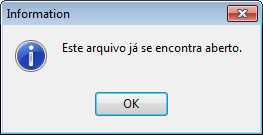TSPY_BANKER.NJH
Mal/Banspy-I (Sophos); W32/Banspy.I!tr.pws (Fortinet); Win32:Banker-KIT [Trj] (Avast); Trojan-Banker.Win32.Banker (Ikarus); PWS-Banker.gen.b (McAfee)
Windows


Threat Type: Spyware
Destructiveness: No
Encrypted: No
In the wild: Yes
OVERVIEW
This spyware arrives on a system as a file dropped by other malware or as a file downloaded unknowingly by users when visiting malicious sites.
It connects to certain websites to send and receive information.
TECHNICAL DETAILS
Arrival Details
This spyware arrives on a system as a file dropped by other malware or as a file downloaded unknowingly by users when visiting malicious sites.
Installation
This spyware drops the following files:
- %User Temp%\google_chrome
(Note: %User Temp% is the user's temporary folder, where it usually is C:\Documents and Settings\{user name}\Local Settings\Temp on Windows 2000, Windows Server 2003, and Windows XP (32- and 64-bit); C:\Users\{user name}\AppData\Local\Temp on Windows Vista (32- and 64-bit), Windows 7 (32- and 64-bit), Windows 8 (32- and 64-bit), Windows 8.1 (32- and 64-bit), Windows Server 2008, and Windows Server 2012.)
It drops the following copies of itself into the affected system:
- %User Temp%\Google Chome.exe
(Note: %User Temp% is the user's temporary folder, where it usually is C:\Documents and Settings\{user name}\Local Settings\Temp on Windows 2000, Windows Server 2003, and Windows XP (32- and 64-bit); C:\Users\{user name}\AppData\Local\Temp on Windows Vista (32- and 64-bit), Windows 7 (32- and 64-bit), Windows 8 (32- and 64-bit), Windows 8.1 (32- and 64-bit), Windows Server 2008, and Windows Server 2012.)
Other System Modifications
This spyware adds the following registry entries:
HKEY_CURRENT_USER
Google Chome = "%User Temp%\Google Chome.exe"
HKEY_LOCAL_MACHINE\SYSTEM\CurrentControlSet\
Services\SharedAccess\Parameters\
FirewallPolicy\StandardProfile\AuthorizedApplications\
List
{malware path}\{malware filename}.exe = "{malware path}\{malware filename}.exe:*:Enabled:google_chrome"
Process Termination
This spyware terminates the following processes if found running in the affected system's memory:
- GbpSV.exe
Information Theft
This spyware targets the following websites:
- Banco de Brasil
- Caixa
- HSBC Brasil
- PayPal
- Pagseguro
- Outlook
It gathers the following data:
- Username
- Password
- Name
- Data
- CPF
- Holder
- Agency
- Account
Other Details
This spyware connects to the following website to send and receive information:
- http://www.{BLOCKED}e.com.br/cartel/banca.php
- http://www.{BLOCKED}e.com.br/cartel/reg/{page}.php?value={value}
NOTES:
The value for {page} in the list of URLs it sends information to may contain any of the following:
- outlook
- pagseguro
- pay
- amarelo
- preta
- azul
This spyware executes the following command to allow TCP/UDP connections:
cmd.exe /C netsh firewall add allowedprogram "{malware path}\{malware file name}.exe" google_chrome ENABLE
It shows an error once the file is executed.

It monitors the user's keystrokes and mouse clicks to steal information.
It monitors the browser activities of the affected system, specifically the title bar. It recreates a legitimate website with a spoofed login page if a user visits websites with the following strings in the title bar:
- Servicos Financeiros Pessoa Fisica | HSBC Brasil
- Caixa - A vida pede mais que um banco
- Entrar
- PagSeguro: Venda pela internet e receba pagamentos online facilmente
- Acesse Brasil - PayPal
- Bem-vindo ao Facebook - acesse, cadastre-se ou saiba mais.
It produces a message once any of the said websites were accessed. If the user is using Google Chrome, is automatically terminated.

SOLUTION
Step 1
Before doing any scans, Windows XP, Windows Vista, and Windows 7 users must disable System Restore to allow full scanning of their computers.
Step 2
Note that not all files, folders, and registry keys and entries are installed on your computer during this malware's/spyware's/grayware's execution. This may be due to incomplete installation or other operating system conditions. If you do not find the same files/folders/registry information, please proceed to the next step.
Step 3
Delete this registry value
Important: Editing the Windows Registry incorrectly can lead to irreversible system malfunction. Please do this step only if you know how or you can ask assistance from your system administrator. Else, check this Microsoft article first before modifying your computer's registry.
- In HKEY_CURRENT_USER
- Google Chome = "%User Temp%\Google Chome.exe"
- Google Chome = "%User Temp%\Google Chome.exe"
- In HKEY_LOCAL_MACHINE\SYSTEM\CurrentControlSet\Services\SharedAccess\Parameters\FirewallPolicy\StandardProfile\AuthorizedApplications\List
- {malware path}\{malware filename}.exe = "{malware path}\{malware filename}.exe:*:Enabled:google_chrome"
- {malware path}\{malware filename}.exe = "{malware path}\{malware filename}.exe:*:Enabled:google_chrome"
Step 4
Search and delete this file
- %User Temp%\google_chrome
Step 5
Scan your computer with your Trend Micro product to delete files detected as TSPY_BANKER.NJH. If the detected files have already been cleaned, deleted, or quarantined by your Trend Micro product, no further step is required. You may opt to simply delete the quarantined files. Please check this Knowledge Base page for more information.
Did this description help? Tell us how we did.



